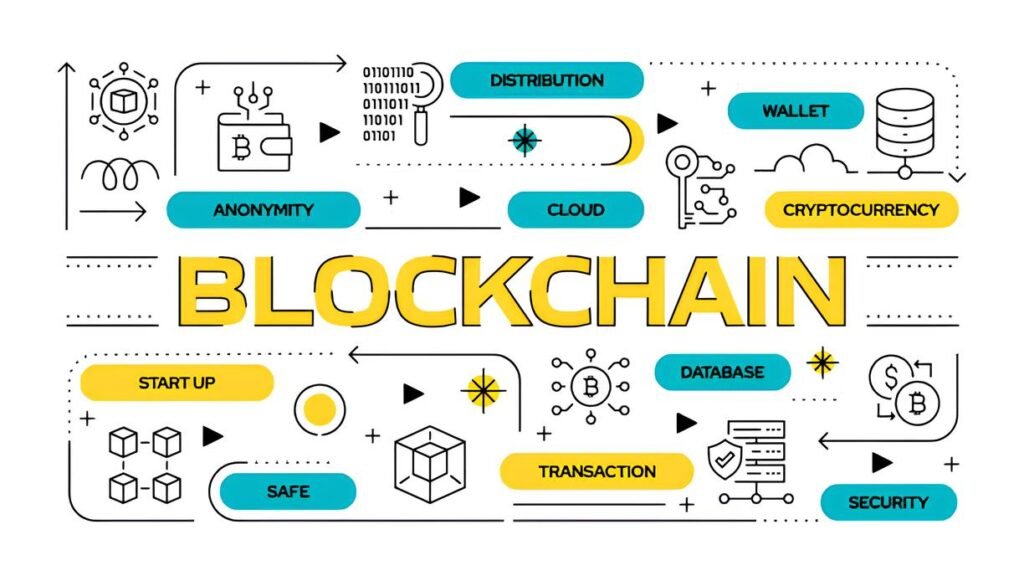Whonix vs. Tails: Choosing Your Secure Environment
Imagine waking up every day knowing that your digital footprint is as invisible as a shadow at midnight. For privacy enthusiasts, journalists, whistleblowers, and anyone wary of prying eyes, that’s the dream: a system so secure that even the most sophisticated surveillance can’t trace your activity. But in the vast sea of privacy tools, two names often come up—Whonix and Tails. Each promises a fortress of anonymity but differs in approach, user experience, and security philosophy.
So, how do you pick the right environment when your online freedom—and sometimes your safety—hangs in the balance? Let’s unpack these two heavyweights and find what fits your unique privacy needs.
In This Article
- Understanding Whonix: Anonymity by Isolation
- Exploring Tails: A Live System for On-the-Fly Privacy
- Core Security Features Compared
- Ease of Use and Learning Curve
- Performance & Resource Requirements
- Who Should Use Whonix or Tails?
- Common Pitfalls and How to Avoid Them
- Integration with VPNs, Tor, and Other Privacy Tools
- Final Considerations: Finding Your Privacy Rhythm
Understanding Whonix: Anonymity by Isolation
Whonix is not just an operating system; it’s a dual-virtual-machine setup designed to compartmentalize your activities. It separates your internet traffic from your applications inside two virtual machines: the Whonix-Gateway and the Whonix-Workstation. The Gateway routes all traffic through the Tor network, while the Workstation runs your programs behind this protective wall.
This separation means your IP address can’t leak from your apps, no matter what you run, because no direct internet connection is possible outside the Gateway’s Tor routing. Whonix focuses heavily on leak resistance and is especially suited for persistent use cases where a secure, controlled environment is necessary.
Interestingly, Whonix requires a bit of setup—you’ll need virtualization software such as VirtualBox or KVM—and a willingness to invest time in understanding the workflow. But for anyone needing long-term anonymity that integrates well with other security tools, it’s a compelling choice.
Exploring Tails: A Live System for On-the-Fly Privacy
Tails takes a different approach—it’s a live operating system you boot from USB or DVD. Designed to leave no trace, Tails works entirely in your computer’s RAM. When you shut it down, everything disappears, making it ideal for temporary privacy needs or travel situations.
Tails routes all traffic through the Tor network by default, and comes preloaded with security-minded software, including encrypted email clients and reliable messaging apps. It’s a go-to solution when you want to quickly boot into a private environment without risking data leakage on your regular OS.
The trade-off? Tails assumes a “stateless” session, so persistent local storage is discouraged (although encrypted persistence is possible). It’s perfect for those who prioritize quick, out-of-the-box anonymity over a longer-term, fully customizable environment.
Core Security Features Compared
Both Whonix and Tails share an important foundation: all network traffic is routed through the Tor anonymity network. This prevents direct IP exposure and encrypts data multiple times as it bounces through Tor relays.
- Whonix: Enforces strict network isolation through its Gateway-Workstation split. The design inherently blocks leaks from apps or misconfigurations. It supports advanced firewall controls and even allows sandboxing of applications.
- Tails: Completely amnesic by default, wiping RAM on shutdown. It forces all applications to use Tor, and its firewall blocks any non-Tor traffic. It also comes with tools for secure file encryption and metadata removal—key for investigative journalists or activists.
However, there are subtle risks unique to each:
- Whonix’s reliance on virtualization means you must trust the hypervisor and correctly configure it to avoid leaks.
- Tails, being a live OS, depends on proper shutdown to erase data, and hardware peculiarities (like telemetry chips or firmware) can pose threats.
Never use Whonix or Tails without understanding their operational limits—poor user practices like running unsafe software or ignoring documentation can undo even the best security setups.
Ease of Use and Learning Curve
Choosing between Whonix and Tails often comes down to convenience. If you prefer a streamlined, ready-to-go privacy environment without installing software, Tails wins points. You just download the image, flash it to a USB stick, and boot wherever you are.
Whonix, meanwhile, demands more technical dexterity upfront. Setting up virtual machines, tweaking network interfaces, and managing snapshots can intimidate newcomers. However, once mastered, it offers a more customizable and stable workspace that feels almost like a regular desktop behind an impenetrable wall.
For users who want anonymity with minimal fuss, Tails offers simplicity. Those willing to dive deeper and desire a persistent environment will appreciate Whonix’s modular and robust structure.
Performance & Resource Requirements
Running a secure OS always comes with workload overhead. Whonix requires a host OS and virtualization software running in tandem, which can tax CPU and RAM, especially on older machines. Users have reported variable speeds depending on configuration and hardware.
Tails runs directly on the hardware, which can offer better raw speed but might struggle with resource-heavy applications since it operates from RAM and a USB stick, which are slower than internal drives.
Neither system is designed for gaming or media editing—if you want smooth multitasking with robust privacy, Whonix on a modern PC or laptop tends to be easier. But for brief private sessions or emergency use, Tails on a modest device works well.
Who Should Use Whonix or Tails?
Each option shines under different user profiles:
- Whonix is ideal for:
- Journalists or activists who need a persistent, secure environment.
- Cryptocurrency traders and privacy enthusiasts handling sensitive tasks regularly.
- Users comfortable with virtualization and willing to invest time in advanced configurations.
- Tails is ideal for:
- Quick, on-the-go anonymity with no trace left behind.
- Users traveling to hostile locations where bootable anonymity tools are essential.
- People less familiar with tech but wanting a simple, out-of-the-box privacy solution.
Not sure which to pick? Consider using both: Whonix for everyday heavy work, and Tails for crucial sessions on untrusted or public machines.
Common Pitfalls and How to Avoid Them
Users often underestimate the risks outside the OS itself. Insecure behavior—logging into personal accounts, downloading unsafe files, or disabling Tor—creates loopholes even the best environments can’t patch.
With Whonix, improper virtualization settings or using unsupported software can cause IP leaks. And since it’s persistent, malware can hide undetected if you install untrusted applications.
Tails, while amnesic, may leave traces if:
- You enable persistent storage carelessly.
- You don’t properly shutdown or use hibernation features.
- Your hardware or firmware has vulnerabilities (e.g., Intel ME exploits).
Regardless of your choice, always combine these systems with good “data hygiene” habits, like those discussed in how to practice good “data hygiene” across devices, to maximize your privacy defenses.
Integration with VPNs, Tor, and Other Privacy Tools
Both Whonix and Tails rely on the Tor network for anonymity but their interaction with VPNs differs subtly.
Whonix’s Gateway setup allows multiple routing configurations, including:
- VPN before Tor (VPN over Tor): Runs a VPN inside the Gateway so all Tor traffic appears as VPN traffic.
- Tor before VPN (Tor over VPN): Connects to a VPN from the Workstation after Tor.
You can deeply customize this routing, which is powerful but can confuse newcomers. For clarity on how these different VPN and Tor chains function, you might explore how Tor over VPN differs from VPN over Tor in real use.
Tails ships with Tor built-in and advocates against VPN use by default, as it can risk DNS leaks if misconfigured. However, advanced users can set up VPNs in Tails for extra hops—though this requires caution and manual tweaks.
Beyond networking, both OSs support tools like MAT2 (Metadata Anonymization Toolkit) for removing embedded file metadata, enhancing privacy when sharing files or documents. Integrating these tools into your workflow is critical against modern surveillance methods.
Final Considerations: Finding Your Privacy Rhythm
The choice between Whonix and Tails hinges not just on technology but on your lifestyle, threat model, and priorities. Privacy is a dance—it requires a rhythm between powerful tools and sensible habits.
Whonix suits those who want a stable, flexible, and persistent environment—think of it like a secure home where you can settle in and build your digital life. Tails, by contrast, is more like a stealthy tent you set up for a night in unfamiliar territory—portable, quick, and leaves no trace.
Remember, no privacy tool is a silver bullet. Even the best security can be undermined by careless use or behavioral patterns. For in-depth strategies that complement these OSs, combining privacy tools with good operational security and understanding metadata risks can make all the difference. For a solid foundation, exploring articles like how to stay anonymous on the darknet in 2025: a beginner’s guide can help you grasp the broader picture beyond just software.
In the end, the best tool is the one you can use consistently and wisely. So take time to experiment, learn, and build your own fortress against the digital world’s ever-watchful eyes.




Pingback: How to move between darknet identities without overlap | Torutopia
Pingback: Secure peer-to-peer file sharing tools that work over Tor | Torutopia
Pingback: Monitoring onion services for changes—without revealing yourself | Torutopia
Pingback: Designing OPSEC protocols for multi-person darknet teams | Torutopia
Pingback: Safe file conversion tools for anonymous workflows | Torutopia
Pingback: Darknet blogging: publishing with anonymity and integrity | Torutopia
Pingback: Developing darknet code without compromising privacy | Torutopia
Pingback: The impact of zero-click exploits on Tor users | Torutopia
Pingback: What Makes a .onion Site Truly Anonymous? | Torutopia
Pingback: What Is a “Tor Trap” and How Can You Spot One? | Torutopia
Pingback: Why You Shouldn’t Use Bookmarks in the Tor Browser | Torutopia
Pingback: Inside the Rise of Private Darknet Forums | Torutopia
Pingback: How to run darknet user testing without exposing researchers | Torutopia
Pingback: Comparing Hidden Wiki Versions Across Markets | Torutopia
Pingback: Why Your Smartphone Betrays You Even with Tor | Torutopia
Pingback: Why offline crypto transaction signing is crucial for darknet vendors | Torutopia
Pingback: Why Most Darknet How-To Guides Contain Dangerous Advice | Torutopia